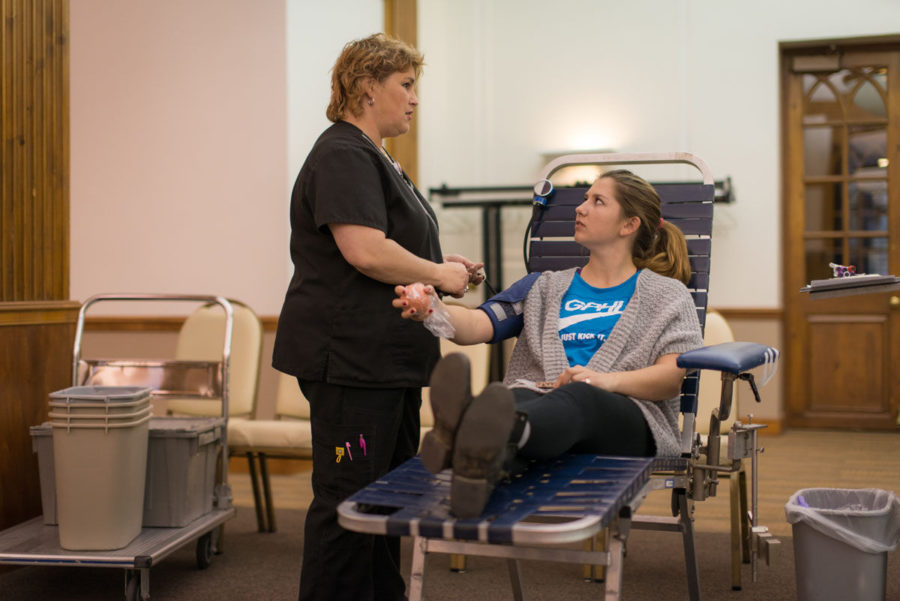Distributors expect student blood donations to decrease
Nov 17, 2014
Last updated on Nov. 28, 2016 at 09:11 p.m.
While the demand for blood from blood drives never decreases, local blood organizations are anticipating a significant decline in the number of donors during the coming winter months.
Community Blood Services of Illinois in Urbana experienced a 25 percent decline in donations on campus this fall compared to last year.
Not only have donations decreased this fall, but they have a history of decreasing during the winter seasons, according to Blood Center’s website.
Carrie Johnston, director of donor relations at the Community Blood Services of Illinois, said the organization relies heavily on the University population for donations. The organization might have even less donations in the next few months due to students leaving the area, busier schedules during the holiday season and colder weather, which might make people less willing to travel to donate blood, Johnston said.
Get The Daily Illini in your inbox!
Community Blood Services of Illinois is a local supplier of blood to hospitals, including Carle Foundation Hospital in Champaign, Presence Covenant Medical Center in Urbana and Presence United Samaritans Medical Center in Danville. It held a blood drive last week in the Illini Union to encourage students to donate blood.
Amanda Howie, donor relations coordinator at Community Blood Services of Illinois, said the goal was 15 people per day.
Danaya Siripun, sophomore in business, waited to donate blood at the Union because she feels its something she should do as a student.
“We’re at an age group where a lot of us are healthy enough to donate blood,” Siripun said. “It’s not something hard to do. It only takes a little time. So if you can contribute, where else are they going to get the blood?”
Siripun said she normally plans ahead to donate blood and prepares by eating eggs and spinach the day before so she can pass the hemoglobin test, which tests the blood to make sure it is rich in protein and usable for those who need it.
Around 38 percent of people in the U.S. are eligible to donate blood; however, less than 10 percent of those eligible donate blood each year, according to the Red Cross website,
Johnston said many people aren’t eligible because of sickness or lifestyle choices, such as the use of illegal drugs.
Because donations are down, the need for blood is even greater. Someone in the U.S. needs blood every two seconds, according to the Red Cross.
“There is no replacement for blood,” Johnston said. “It’s not something you can create in a lab. It has to come from a donation.”
Zeena Patel, senior in AHS, volunteered at the blood donation at the Union as a part of her service work with Alpha Phi Omega, a co-ed service fraternity that participates in service events involving the community and campus.
“I think it’s important to give back to everything that’s been given to us,” she said.
Ali can be reached at [email protected].






